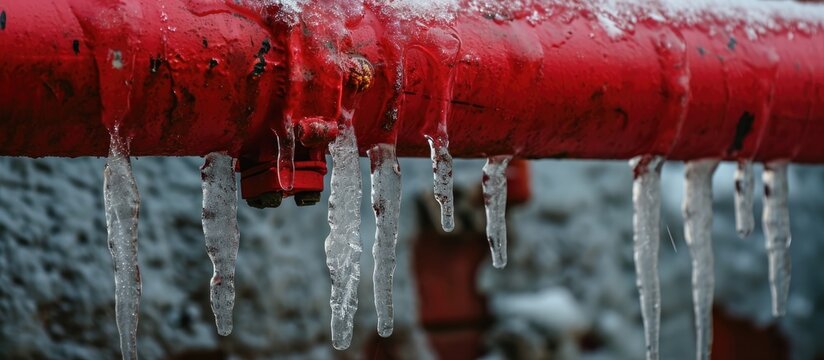Crucial Tips for Avoiding Frozen Pipes in Winter Conditions
Crucial Tips for Avoiding Frozen Pipes in Winter Conditions
Blog Article
Have you been looking for content involving Helpful Tips to Prevent Frozen Pipes this Winter?

Winter can ruin your plumbing, particularly by freezing pipelines. Right here's just how to avoid it from happening and what to do if it does.
Intro
As temperature levels decrease, the threat of frozen pipes boosts, potentially bring about expensive repairs and water damage. Understanding exactly how to avoid icy pipelines is crucial for homeowners in cold environments.
Recognizing Icy Pipelines
What triggers pipes to freeze?
Pipes freeze when revealed to temperature levels listed below 32 ° F (0 ° C) for expanded durations. As water inside the pipes freezes, it increases, taxing the pipe walls and possibly triggering them to break.
Risks and damages
Frozen pipelines can bring about water system disruptions, residential property damages, and expensive repair work. Burst pipelines can flooding homes and trigger comprehensive structural damage.
Indicators of Frozen Piping
Identifying icy pipes early can avoid them from rupturing.
Just how to recognize icy pipes
Search for lowered water flow from faucets, uncommon smells or sounds from pipelines, and noticeable frost on exposed pipelines.
Prevention Tips
Protecting vulnerable pipes
Wrap pipelines in insulation sleeves or use warm tape to safeguard them from freezing temperatures. Concentrate on pipes in unheated or outside locations of the home.
Home heating strategies
Maintain interior rooms adequately heated, especially locations with pipes. Open cabinet doors to allow cozy air to circulate around pipes under sinks.
Protecting Exterior Plumbing
Yard tubes and outdoor taps
Detach and drain yard tubes prior to winter. Set up frost-proof faucets or cover exterior faucets with shielded caps.
What to Do If Your Pipelines Freeze
Immediate actions to take
If you believe frozen pipes, maintain taps open up to soothe pressure as the ice melts. Make use of a hairdryer or towels soaked in warm water to thaw pipelines gradually.
Long-Term Solutions
Architectural adjustments
Take into consideration rerouting pipes away from outside wall surfaces or unheated areas. Include additional insulation to attic rooms, basements, and crawl spaces.
Upgrading insulation
Invest in high-grade insulation for pipes, attic rooms, and walls. Appropriate insulation helps keep regular temperatures and reduces the risk of frozen pipes.
Conclusion
Stopping icy pipelines calls for proactive procedures and fast responses. By recognizing the causes, indicators, and preventive measures, home owners can secure their plumbing throughout winter.
5 Ways to Prevent Frozen Pipes
Drain Outdoor Faucets and Disconnect Hoses
First, close the shut-off valve that controls the flow of water in the pipe to your outdoor faucet. Then, head outside to disconnect and drain your hose and open the outdoor faucet to allow the water to completely drain out of the line. Turn off the faucet when done. Finally, head back to the shut-off valve and drain the remaining water inside the pipe into a bucket or container. Additionally, if you have a home irrigation system, you should consider hiring an expert to clear the system of water each year.
Insulate Pipes
One of the best and most cost-effective methods for preventing frozen water pipes is to wrap your pipes with insulation. This is especially important for areas in your home that aren’t exposed to heat, such as an attic. We suggest using foam sleeves, which can typically be found at your local hardware store.
Keep Heat Running at 65
Your pipes are located inside your walls, and the temperature there is much colder than the rest of the house. To prevent your pipes from freezing, The Insurance Information Institute suggests that you keep your home heated to at least 65 degrees, even when traveling. You may want to invest in smart devices that can keep an eye on the temperature in your home while you’re away.
Leave Water Dripping
Moving water — even a small trickle — can prevent ice from forming inside your pipes. When freezing temps are imminent, start a drip of water from all faucets that serve exposed pipes. Leaving a few faucets running will also help relieve pressure inside the pipes and help prevent a rupture if the water inside freezes.
Open Cupboard Doors
Warm your kitchen and bathroom pipes by opening cupboards and vanities. You should also leave your interior doors ajar to help warm air circulate evenly throughout your home.

Do you really like reading up on Winter Plumbing Precautions: Preventing Frozen Pipes? Place a remark down the page. We would be delighted to hear your thinking about this entry. Hoping that you visit us again in the future. Are you aware of someone else who is in the market for the niche? Feel free to promote it. We treasure reading our article about How to prepare your home plumbing for winter weather.
Call Today Report this page